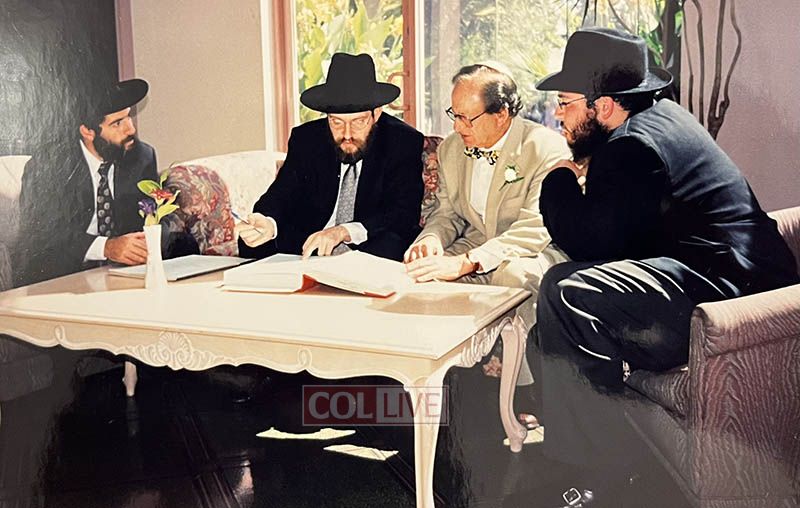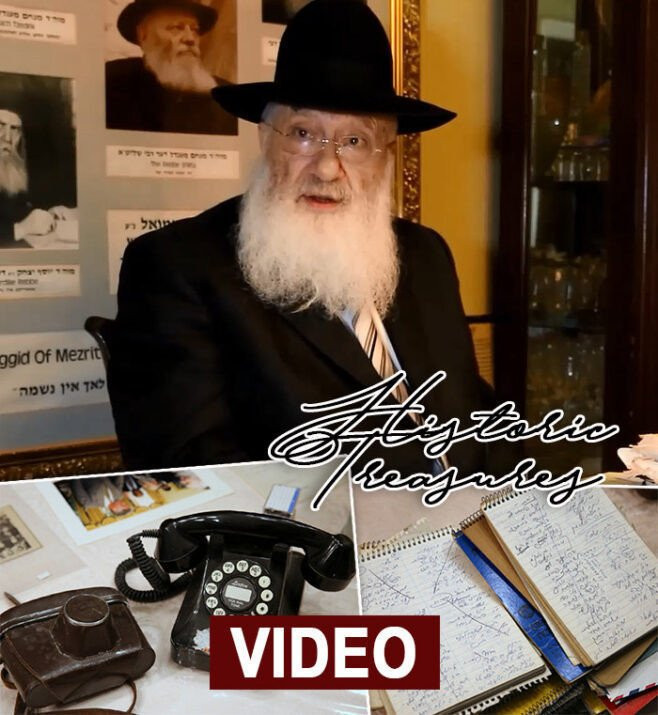By Rabbi Mendel Schwartz
In 1998 I had the great fortune of being selected to study Rabbanus in the Yossel Gutnick Semicha program in Melbourne, Australia under the guidance and leadership of HaRav Feitel Levin. The Semicha program was catered for bochurim who showed leadership qualities who would one day start their own kehillas, become shluchim, or rabbonim in shuls. From the 90 applicants, 18 were accepted. All expenses paid for. This was the era when Yossel was contributing millions of dollars to Mosdos around the world including political parties in Israel. We were treated like Kings, with two personal chefs preparing our meals 3 times a day. I had no complaints.
Seven months into the program, I approached Yossel and told him how wonderful we all felt studying on his dime, and how much we were studying every day, and how excited we all were to be ordained Rabbis in the coming weeks. However, I felt that to be truly a program of “Rabbi’s in training”, we shouldn’t just study in a Beis Medrash, we should go out “to the streets” and make a difference to the community at large. To which Yossel replied, “What do you have in mind?” I responded with, “We are 18 boys, please send us out in groups of 2 or 3 bochurim to different parts of Australia for Shavous, so we can make minyanim for the aseres hadibros.” He asked, “how much will this cost me?” he asked. And I said, “I don’t know, but I can draft a budget.”
A few days later I presented Yossel with a budget of $30,000 with 7 different locations. I chose Hobart, Tasmania with two other boys – Baruch Shalom Ezagui who was my chavrusa, and Yossi Berkowitz. To my delight, he agreed to my proposal and said we should call his travel agent and arrange hotel bookings, car rentals, and airfare.
We arrived in Hobart, and arranged to retrieve the key to the shul from a gentile who manages the property. This gorgeous temple is the oldest temple in Australia, built in 1845. We of course toured this small beautiful town, and spread the word at various coffee shops, the marina, and other tourist hot spots, that the shul will be opening on Shavous day. We opened the shul the first night of Yom Tov knowing we would not have a minyan. However, there were 2 backpackers from the USA that thought we would be providing a dinner for the attendees. To their dismay, we told them we have no food here, but they should come back the next day to hear the 10 commandments. They said, “We will come by tomorrow, but it would be nice to have a Holiday meal tonight”. We responded that we are staying in a small hotel room and will be eating our dinner over salami sandwiches. They asked if they could join us in our hotel room. The other bochurim were uneasy, but I thought it would be a great idea. So all 5 of us made kidush and had seudas yom tov. The next day, we Baruch Hashem had a minyan in shul. I remember being Gabbai and calling up the locals for an aliyah. All of them were Avraham ben Avraham.
The second day of Yom Tov we knew we couldn’t muster a minyan so we reserved this day for shpartzi’ing. To our disbelief, we heard a knock on the door at 7AM. It was the manager of the hotel who said he heard there were Jews in this room, and he told us there’s a Jew in Hobart that died late last night, and the family was looking for a Jewish Rabbi to care for the body and arrange for a Kosher burial.
I went directly to the hospital to meet the family of the deceased, and the other bochurim went to an old un-kept cold Mikva that of course hadn’t been used much. (It’s a separate story how the Rebbe many years prior asked Yossel to build that mikva because there was one woman that was living in Hobart who complained to the Rebbe that there was no Mikva in all of Tasmania.)
I remember arriving at the Hospital and seeing the deceased with his wife standing over him. I opened the windows to let the Neshama out, and poured out all the open containers of water. We were learning Hilchos Aveilis in our Semicha program, so these Halochos were still fresh to me.
The bochurim came back from the Mikva, and we all met at the morgue where the body was transferred. The morgue was closed the following day. The staff told us, if we don’t do the Tahara that day, then we would have to wait till after the weekend. In addition, the family insisted the burial be done the next day. But how can we do a Tahara on Yom Tov. The three of us really weren’t sure if we can do a Tahara on Yom Tov, and the truth is, we didn’t know how to do a Tahara at all. And of course we couldn’t use the phones or check the internet. We were learning Hilchos Aveilis, so we had a rough idea what we needed to do to make this Tahara and burial Kosher. We were 20 year old bochurim, and we never expected to apply our learning at such a young age. We all agreed to do the Tahara in the morgue, and what should take roughly 30 minutes took us 2.5 hours. We were arguing over every detail we performed on the Mes. We were discussing the Shach and Taz, we were exchanging opinions if we should pasul a Tzitzis if we can’t find a Talis for shrouds. What if the deceased doesn’t have a circumcision. The morgue director must have thought we were mad. In the end, we felt terrible that we had no dirt from eretz yisroel. (Since a Jew should be buried in Eretz Yisroel, the sages tell us, if we can’t bury somebody in Israel, we should at least put dirt from Israel on the body). To our shock, the director told us, many years ago, there was a Rabbi that gave me a ziplock bag with dirt from Israel, and said if there will ever be a time that a Jew is buried here in Hobart, please use this dirt. We couldn’t believe it. So a new debate amongst us ensued, as to where we place this dirt on the body. The following day, two of us went back to Melbourne, and the 3rd bochur stayed behind and performed the actual burial.
Upon our return, Rav Feitel Levin sat all 18 bochurim down and we did a play by play of this Tahara and he told us what we did correctly, and what we did not do correctly.
Sometimes we think we’re going on a vacation, or to tour another country. The Rebbe however had a mission for us and put us to work. Thankfully, we succeeded. Avraham ben Avraham was buried as a Jew. His Yartzeit is of course the 2nd Day of Shavous – the holiday of Converts. The Holiday of Ruth. The holiday when 600,000 people became converts and became the Jewish nation.
Happy Shavous!!!







beautiful first hand story to go into shavous with!
What an incredible story! Thanks for sharing!